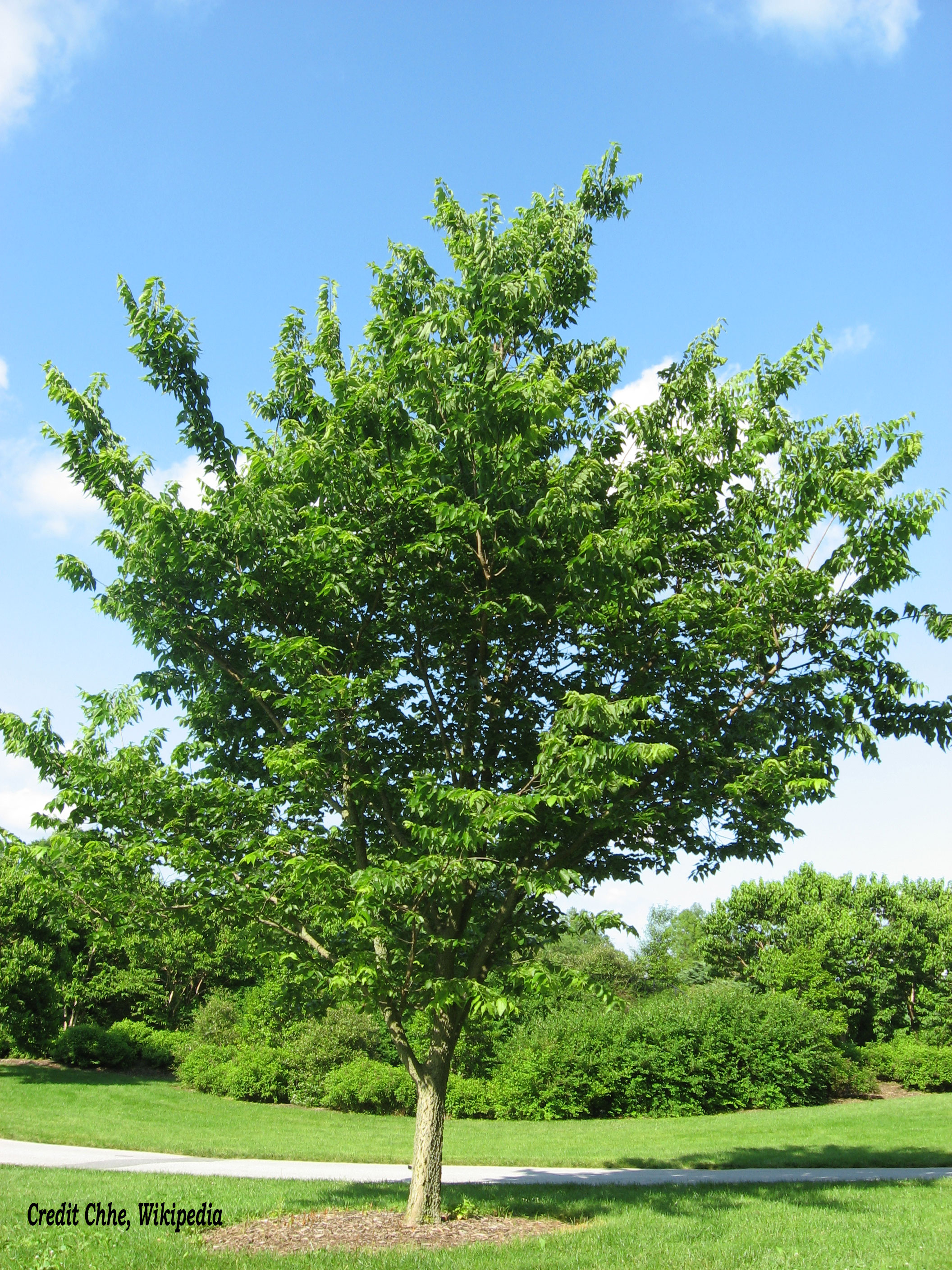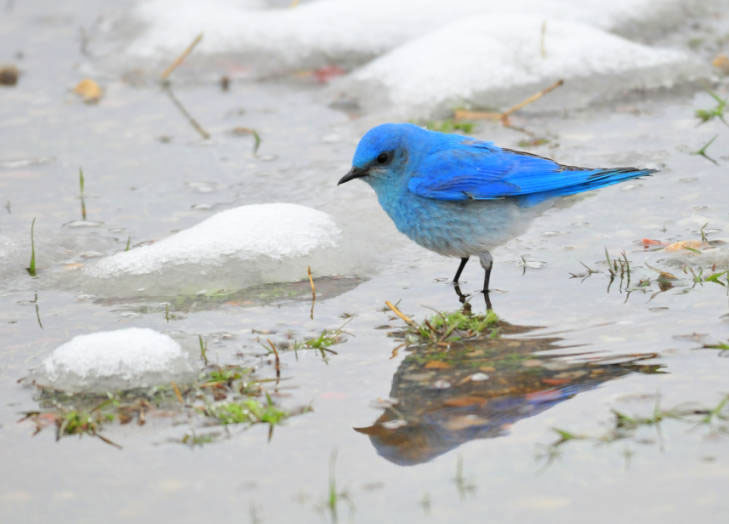
It’s spring in the Black Hills of South Dakota, and, as of today, April 3, the mountain bluebirds have been here for about three weeks. Their winter home is in the southernmost west states of the U.S. (California, Arizona, New Mexico, and Texas) plus northern Mexico. But if you didn’t know where they were coming from, you would think pieces of the sky were indeed falling, for these birds are colored the most brilliant blue imaginable.
Mountain bluebirds (along with gardeners and farmers) are the ultimate optimists. The day after I saw the first pair for the year, a blizzard struck the plains about an hour to the east of us.
No, in the Dakotas, winter doesn’t give up easily. Today, we awoke to an inch-and-a-half of the white stuff on the ground (a bit more is on the way). With a diet comprised mainly of insects and spiders, mountain bluebirds have their work cut out for them. What self-respecting spider, wasp, beetle, grasshopper, or caterpillar is going to be doing loop-the-loops in the air or taking an upside-down stroll on the underside of a leaf? (especially since the leaves here have yet to emerge).
Not one.
Yet, as you might imagine, there are still insects and spiders outside, but they aren’t nearly as accessible or in as large numbers observed in summertime.
Fortunately, mountain bluebirds have other places to look for six- and eight-legged prey. Currently, mountain bluebirds along our road spend a lot of time foraging in a large unmowed field where the dried stalks of grass and thatch provide shelter to over-wintering insects. Other places the birds may search include: tree cavities, under the eaves of buildings, in the leaf litter, or in galls. Other insects, like ants and termites (not really mountain bluebird food anyway), aren’t accessible, for they winter in the soil below the frost line; nor are the larvae of dragonflies and damselflies, who grow and thrive under winter’s blanket of frozen water.

Desperate times call for desperate measures. When spiders and insects are scarce, mountain bluebirds will resort to hackberries, grapes, currants, dogwoods, elderberries, and dried fruits of other plants for food. I can attest to the value of hackberry trees to songbirds in early spring: just last week in Pierre, SD, the neighborhood’s hackberry trees were dripping with robins and cedar waxwings as they devoured the trees’ berries (When I spent time in west Texas, I observed a goshawk nesting atop a hackberry’s main trunk, while in the vicinity, a pair of Bell’s vireos and several hummingbirds built their nests in some other hackberry trees’ branchtips).
Warmer weather in South Dakota will eventually prevail. And with it will come other birds, adorned in the spectacular palettes only nature can conjure. I look forward to the day when I see the first western tanager of the season. Black and bright yellow feathers color the wings and breast of this bird, while the fire of a sunset blazes atop their throats and crowns.
When that highly anticipated moment finally arrives and I hear the tanager’s characteristic upward tik-tik-tik declaration in the canopy of a pine tree, I’ll be the first to say:

The sun is falling!
Have a great one.
Credits:
https://www.allaboutbirds.org/guide/Mountain_Bluebird/lifehistory
